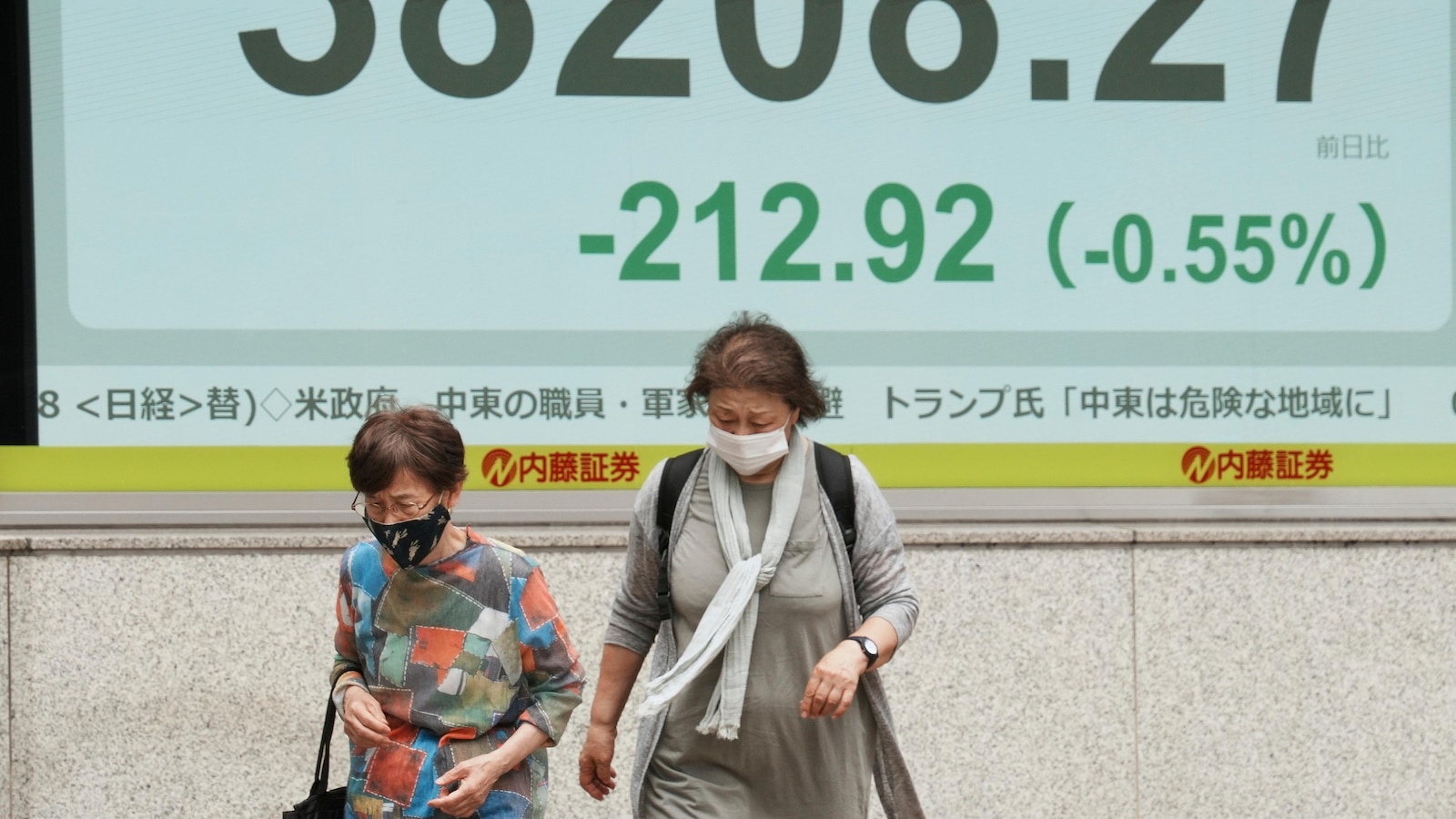TOKYO — Asian shares were trading mixed early Thursday after Wall Street’s rally stalled as investors appeared not to react much to the results of the latest round of China-U.S. trade talks.
U.S. futures slipped and oil prices slipped.
Japan’s Nikkei 225 lost 0.5% to 38,213.20.
Hong Kong’s Hang Seng sank 0.5% to 24,234.80, while the Shanghai Composite index edged 0.1% lower to 3,404.66.
In South Korea, the Kospi gained 0.8% to 2,929.94, while Australia’s S&P/ASX 200 edged 0.1% higher to 8,604.50.
Taiwan’s Taiex lost 0.8%.
On Wednesday, the S&P 500 fell 0.3% to 6,022.24 for its first loss in four days. The Dow Jones Industrial Average was virtually unchanged at 42,865.77 after edging down by 1 point. The Nasdaq composite slipped 0.5% to 3,400.30.
All told, the S&P 500 fell 16.57 points to 6,022.24. The Dow Jones Industrial Average slipped 1.10 to 42,865.77, and the Nasdaq composite sank 99.11 to 19,615.88.
Several Big Tech stocks led the way lower, and a 1.9% drop for Apple was the heaviest weight on the market. It’s been listless this week after unveiling several modest upcoming changes to the software that runs its devices.
The action was stronger in the bond market, where Treasury yields eased after a report suggested President Donald Trump’s tariffs are not pushing inflation much higher, at least not yet.
U.S. consumers had to pay prices for food, gasoline and other costs of living that were 2.4% higher overall in May than a year earlier. That was up from April’s 2.3% inflation rate, but it wasn’t as bad as the 2.5% that Wall Street was expecting.
A fear has been that Trump’s wide-ranging tariffs could ignite an acceleration in inflation, just when it had seemed to get nearly all the way back to the Federal Reserve’s 2% target from more than 9% three summers ago. It hasn’t happened, though economists warn it may take months more to feel the full effect of Trump’s tariffs.
Trump said Wednesday that China will supply rare-earth minerals and magnets to the United States, while his government will allow Chinese students into U.S. universities in a deal that still needs an agreement by him and by China’s leader. Trump also said that “President XI and I are going to work closely together to open up China to American Trade. This would be a great WIN for both countries!!!”
Investors are still hoping for a more sweeping trade deal that would ease tensions between the world’s two largest economies.
Hopes for such deals between the United States and countries around the world have been one of the main reasons the S&P 500 has charged nearly all the way back to its all-time high after dropping roughly 20% below a couple months ago. Without them, the fear is that Trump’s high tariffs could drive the economy into a recession while pushing inflation higher. The S&P 500 is now sitting 2% below its record.
Tesla swung between gains and losses before finishing with a rise of 0.1% to continue its shaky run. It’s been recovering much of its big losses taken last week after Elon Musk’s relationship with Trump imploded, which in turn raised fears about a loss of business for the electric-vehicle company. Musk on Wednesday backed away from some of his earlier comments and said they went “too far.”
In the bond market, the yield on the 10-year Treasury eased to 4.41% from 4.47% late Tuesday. Shorter-term yields, which more closely track expectations for what the Fed will do with overnight interest rates, fell more.
Wednesday’s better-than-expected reading on inflation raised expectations along Wall Street that the Fed could cut its main interest rate at least twice by the end of the year.
In other dealings early Thursday, U.S. benchmark crude oil lost 33 cents to $67.82 per barrel. Brent crude, the international standard, shed 37 cents to $69.40 per barrel.
The U.S. dollar slipped to 143.89 Japanese yen from 144.60 yen. The euro rose to $1.1520 from $1.1487.
